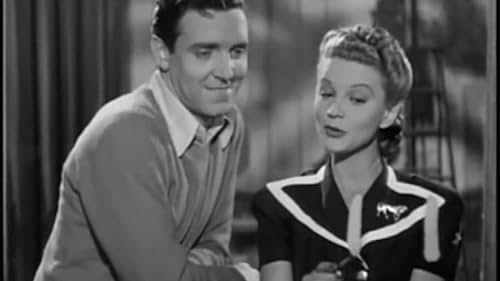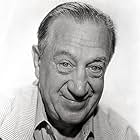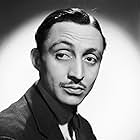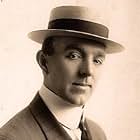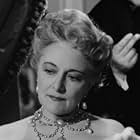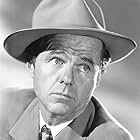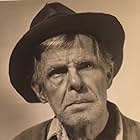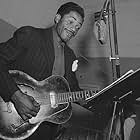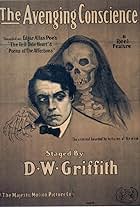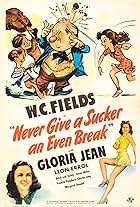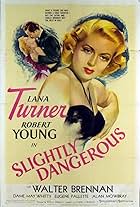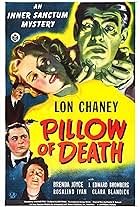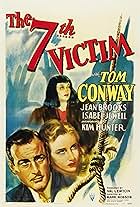VALUTAZIONE IMDb
7,4/10
3621
LA TUA VALUTAZIONE
Aggiungi una trama nella tua linguaOlsen and Johnson, a pair of stage comedians, try to turn their play into a movie and bring together a young couple in love, while breaking the fourth wall every step of the way.Olsen and Johnson, a pair of stage comedians, try to turn their play into a movie and bring together a young couple in love, while breaking the fourth wall every step of the way.Olsen and Johnson, a pair of stage comedians, try to turn their play into a movie and bring together a young couple in love, while breaking the fourth wall every step of the way.
- Candidato a 1 Oscar
- 1 candidatura in totale
Slim Gaillard
- Specialty
- (as Slim and Slam)
Trama
Lo sapevi?
- QuizThe original Broadway production of "Hellzapoppin'" opened at the 46th Street Theater on September 22, 1938, and ran for 1404 performances--a considerable run for a Broadway show in the 1930s. The original theatrical run included moves to the Winter Garden Theater and the Majestic Theater. The comic team of Chic Johnson and Ole Olsen wrote and produced the review and served as emcees for the show. As with the movie, the Broadway show was a mix of absurdist comedy skits, comic musical numbers, walk-on comedians and audience participation. There were running gags, such as the woman who walked down the theater aisles shouting "Oscar!", and the man with the potted plant who shouted "Miss Jones!" (One gag from the Broadway show that did not make it into the movie was a woman in the audience who stood up several times and announced she was "just going to the bathroom"). The Harlem Congaroos--the Lindy Hop dance troupe that appears in the film--also appeared in the original Broadway show (although during the show's run, they were variously billed as Whitey's Steppers or Whitey's Lindy Hoppers).
- BlooperBetty picks up a rifle with a bayonet attached, but in the next shot it's a double-barreled shotgun.
- Curiosità sui crediti"......any similarity between HELLZAPOPPIN' and a motion picture is purely coincidental."
- Versioni alternativeThere is an Italian edition of this film on DVD, distributed by DNA Srl (in double version 1.33:1 and 1.78:1), re-edited with the contribution of film historian Riccardo Cusin. This version is also available for streaming on some platforms.
- ConnessioniFeatured in This Joint Is Jumpin' (2000)
- Colonne sonoreHellzapoppin'
Lyrics by Don Raye
Music by Gene de Paul
Sung by The Six Hits (uncredited) during opening and closing credits
Recensione in evidenza
A Hollywood chorus carols in saccharine style: 'I once had a vision of Heaven, and you were there', only to fall straight through the floor... into the infernal regions where, the opening title tells us, any resemblance to a motion picture is purely coincidental.' Well, there is quite a lot of resemblance, but the wildness of the ensuing number, full of devils gleefully "canning" their victims, announces that this is not going to be one more musical.
Ole Olsen's and Chic Johnson's only film triumph has the virtues of its limitations. It came to the screen as a freak Broadway hit, a melange of old sch-ticks, novelty acts and occasionally inspired improvisations which caught the theatre public's fancy in the late 1930s. How to squeeze all this into a film, given that straight recordings of revues had gone by with the talkies' earliest days and cinema-goers usually failed to warm to staginess, unless it was transformed into Busby Berkeley spectacle that would not chime with a crazy comedy? Probably more by another fluke than by calculation, Universal stumbled on the answer: make the impossibility of fixing theatrical spontaneity on celluloid the main running gag in the picture. The result is unique: structurally, if not frame by frame all through, this is the most playful travesty of movie conventions ever to become a big hit for a big studio.
Much of the vaudeville material has dated, though pleasantly enough- the Congeroo jitterbugging is a wow- and some of the gimmicks become familiar by imitation; but boredom is avoided, and several laughs- such as the taxi joke at the beginning. the "Rosebud" line and Cook's bullet-proof vest at the end- are imperishable. How did it happen? Most of the principals, including director Potter, and the stars, were theatre and vaudeville rather than Hollywood types. The script sports its scorn of movie narrative rules, not just in John B Fulton's special effects (freeze, reverse motion, a reprise of his Invisible Man trickery) but in its mockery of plot conventions.
A millionaire pretending to be poor so a rich girl will love him for himself? "That's crazy!" "That's movies!" Mischa Auer as a genuine Russian prince in exile pretending to be phony? It's so the socialites will be amused at knowing his non-secret and will pick up the tab for him, whereas a real nobleman is banal and has to be a waiter. A lavish musical show, with water ballet, mounted in a country house? No problem if Chic and Ole can wreck it, in a good cause.
No doubt other drawbacks governed the screwball treatment. Olsen and Johnson were not built for slapstick, hence other forms of visual excitement. More seriously, and despite faint echoes of Abbott and Costello, they were a fairly bland and over-ingratiating duo. Like Rowan and Martin, they anchored and mediated the eccentricities of Auer, Martha Raye, Hugh Herbert etc and explained, or protested about, the film's oddities. Breaking the frame, giving the game away to the spectators, arguing with a behind-the-scenes collaborator in front of the paying public: heretical in Hollywood, not so unheard-of on the New York boards where comedians played to their claques.
Temporarily O&J gave the off-the-wall comedy an extended life, just as the Marx Brothers were flagging. Like the brothers at MGM, Ole and Chic played matchmaker to more sexually appealing support, took a break for musical or romantic interludes and had road-tested their own contributions: not by sneak-previewing them but by dint of having done the show 1,400 times already.
The world war would speed up the tempo of such entertainment, as would the influence of radio, with its avoidance of 'dead air'. Jokes about the draft and shortages have crept into the Hell scene, and throughout the pace is snappy. However their later films, after the first reel of "Crazy House", showed that O&J could not extend their partnership as fruitfully as Laurel and Hardy, the Marxes or the Ritz Brothers. Or Hope and Crosby, whose "Road" series, with their talking animals and to-camera asides were mining the same seam.
Never mind. The director may have shot the screenwriter in disgust at the finish, but nearly 70 years on, many will find "Hellzapoppin" a lot more fun than "Being John Malkovich", and as cinematically quirky.
Ole Olsen's and Chic Johnson's only film triumph has the virtues of its limitations. It came to the screen as a freak Broadway hit, a melange of old sch-ticks, novelty acts and occasionally inspired improvisations which caught the theatre public's fancy in the late 1930s. How to squeeze all this into a film, given that straight recordings of revues had gone by with the talkies' earliest days and cinema-goers usually failed to warm to staginess, unless it was transformed into Busby Berkeley spectacle that would not chime with a crazy comedy? Probably more by another fluke than by calculation, Universal stumbled on the answer: make the impossibility of fixing theatrical spontaneity on celluloid the main running gag in the picture. The result is unique: structurally, if not frame by frame all through, this is the most playful travesty of movie conventions ever to become a big hit for a big studio.
Much of the vaudeville material has dated, though pleasantly enough- the Congeroo jitterbugging is a wow- and some of the gimmicks become familiar by imitation; but boredom is avoided, and several laughs- such as the taxi joke at the beginning. the "Rosebud" line and Cook's bullet-proof vest at the end- are imperishable. How did it happen? Most of the principals, including director Potter, and the stars, were theatre and vaudeville rather than Hollywood types. The script sports its scorn of movie narrative rules, not just in John B Fulton's special effects (freeze, reverse motion, a reprise of his Invisible Man trickery) but in its mockery of plot conventions.
A millionaire pretending to be poor so a rich girl will love him for himself? "That's crazy!" "That's movies!" Mischa Auer as a genuine Russian prince in exile pretending to be phony? It's so the socialites will be amused at knowing his non-secret and will pick up the tab for him, whereas a real nobleman is banal and has to be a waiter. A lavish musical show, with water ballet, mounted in a country house? No problem if Chic and Ole can wreck it, in a good cause.
No doubt other drawbacks governed the screwball treatment. Olsen and Johnson were not built for slapstick, hence other forms of visual excitement. More seriously, and despite faint echoes of Abbott and Costello, they were a fairly bland and over-ingratiating duo. Like Rowan and Martin, they anchored and mediated the eccentricities of Auer, Martha Raye, Hugh Herbert etc and explained, or protested about, the film's oddities. Breaking the frame, giving the game away to the spectators, arguing with a behind-the-scenes collaborator in front of the paying public: heretical in Hollywood, not so unheard-of on the New York boards where comedians played to their claques.
Temporarily O&J gave the off-the-wall comedy an extended life, just as the Marx Brothers were flagging. Like the brothers at MGM, Ole and Chic played matchmaker to more sexually appealing support, took a break for musical or romantic interludes and had road-tested their own contributions: not by sneak-previewing them but by dint of having done the show 1,400 times already.
The world war would speed up the tempo of such entertainment, as would the influence of radio, with its avoidance of 'dead air'. Jokes about the draft and shortages have crept into the Hell scene, and throughout the pace is snappy. However their later films, after the first reel of "Crazy House", showed that O&J could not extend their partnership as fruitfully as Laurel and Hardy, the Marxes or the Ritz Brothers. Or Hope and Crosby, whose "Road" series, with their talking animals and to-camera asides were mining the same seam.
Never mind. The director may have shot the screenwriter in disgust at the finish, but nearly 70 years on, many will find "Hellzapoppin" a lot more fun than "Being John Malkovich", and as cinematically quirky.
I più visti
Accedi per valutare e creare un elenco di titoli salvati per ottenere consigli personalizzati
- How long is Hellzapoppin'?Powered by Alexa
Dettagli
- Data di uscita
- Paese di origine
- Lingua
- Celebre anche come
- Hellzapoppin - In der Hölle ist der Teufel los
- Luoghi delle riprese
- Aziende produttrici
- Vedi altri crediti dell’azienda su IMDbPro
Botteghino
- Lordo in tutto il mondo
- 4.982 USD
- Tempo di esecuzione1 ora 24 minuti
- Colore
- Proporzioni
- 1.37 : 1
Contribuisci a questa pagina
Suggerisci una modifica o aggiungi i contenuti mancanti

Divario superiore
By what name was Hellzapoppin' (1941) officially released in India in English?
Rispondi
